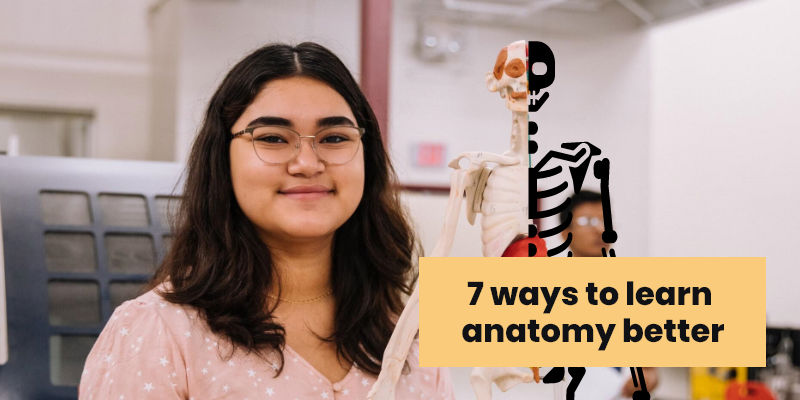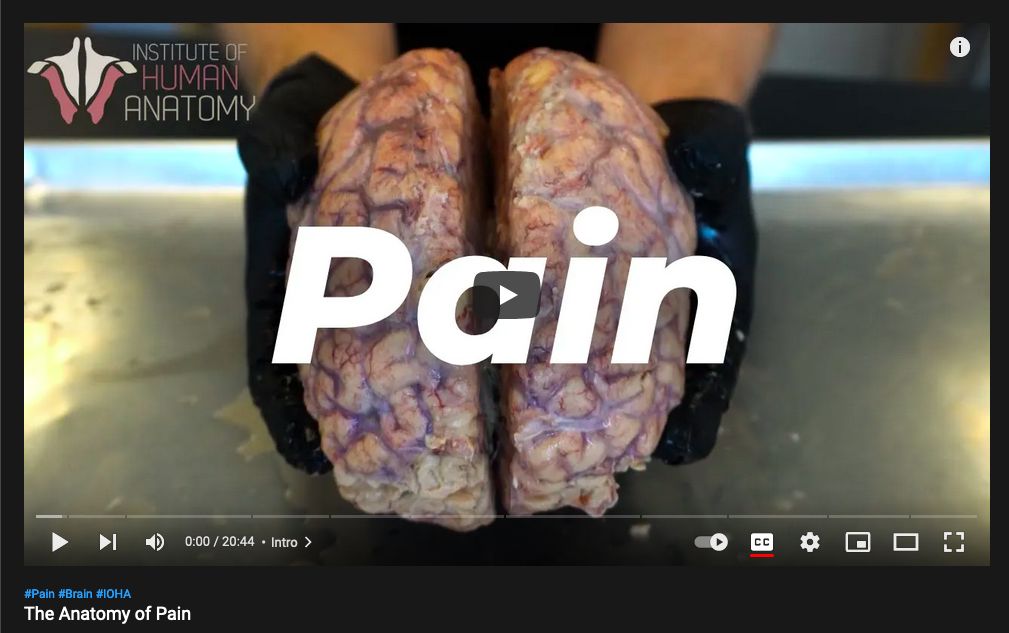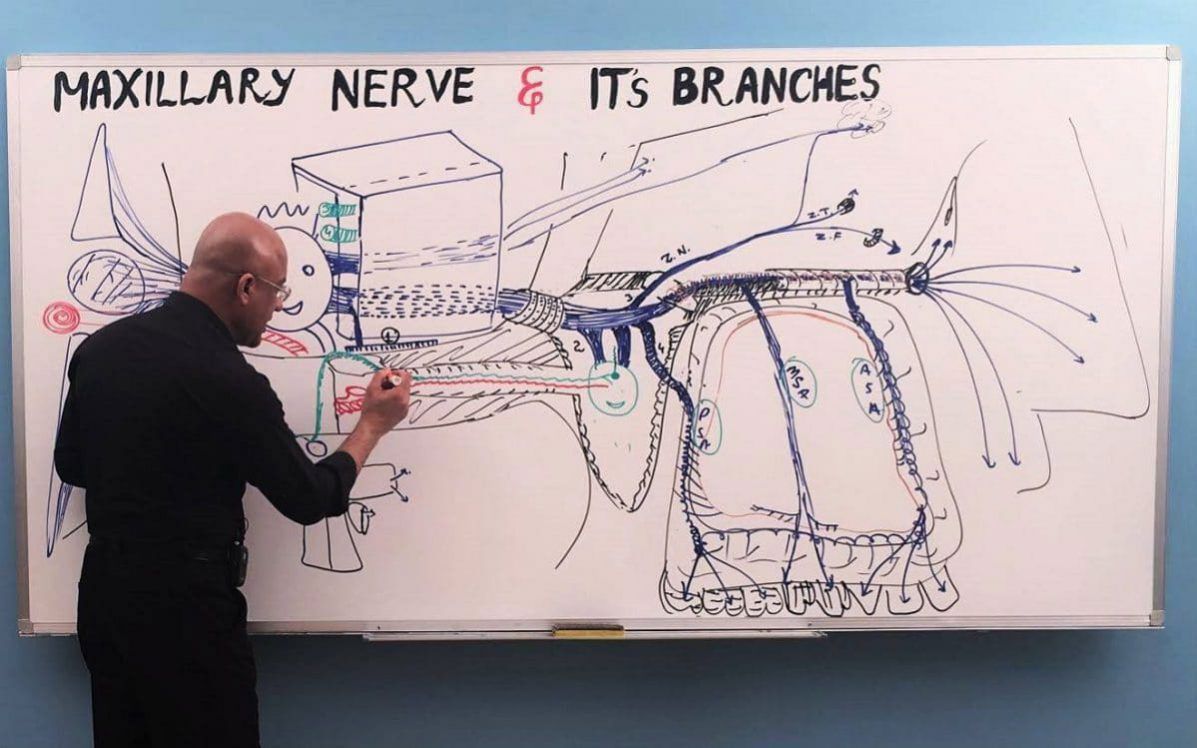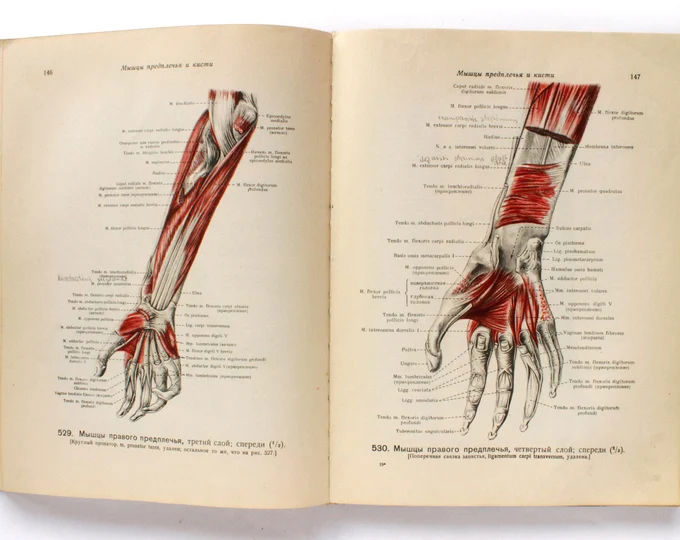7 ways to learn anatomy better

Our chief medical officer Reinis Jansons shares seven excellent resources to help you learn anatomy better. Although anatomy.app already has everything you need to learn anatomy (of course), it’s great to be aware of other reliable sources of information to make your studies more dynamic and interesting.
This blog will introduce you to some useful online databases, video libraries, and a couple of truly excellent books. We’ll also tell you about engaging social media content creators who make anatomy knowledge easily accessible and a part of your everyday life.
1. Institute of Human Anatomy
Institute of Human Anatomy is hands down the best resource for fun anatomy facts! They post amazing weekly videos on YouTube from their state-of-the-art anatomy lab with access to real cadavers. Nowhere else will you see a guy casually grabbing a fresh human brain from a closet and sharing anatomical facts while pointing at it.

Institute of Human Anatomy won’t be where you go when you need to study systematically. Still, it’s a great supplementary resource full of reliable human anatomy facts presented on real specimens in an easy-going manner.
Follow them on any social media, and make anatomy learning a part of your life online. They’ve got 8,5 million followers on TikTok and 2,7 million subscribers on YouTube, so you know there’s something there!
2. Acland’s Video Atlas of Human Anatomy
Acland’s Video Atlas of Human Anatomy features real anatomic specimens and is an absolute classic. This dissection video library lets you see human anatomy in natural colors. Here you can also observe moving structures like muscles, tendons, and joints perform the same movements they would make in live bodies.
As opposed to an actual dissection, gaining information from this video library is not interactive. Yet, the realism of the dissections visible in the videos surely grabs your attention. These materials are beneficial for getting an accurate idea of how anatomical structures look in real life.
Additionally, the information in the library is well structured, and it can be used as a source when studying systematically. Be warned, though – it might take a while to get used to the realism of the preparations.
3. Dr. Najeeb
Dr. Najeeb’s lectures are the most popular online medical lectures out there. There’s a good reason behind it – although the lectures do not contain great visualizations, Dr. Najeeb is a true master of explaining difficult concepts in a simple manner.
Even if you don’t know anything about human anatomy and physiology, you can open one of his videos, put it on 1.5 speed, and understand everything clearly. It’s the quickest way to gain a good comprehension of complex subjects. Sometimes, his explanations are slightly too reduced, but they’re more than sufficient for pre-med students.

4. BlueLink by the University of Michigan
BlueLink is a vast human anatomy database made by the University of Michigan Medical School. It has excellent visualizations, hundreds of high-quality dissection photos, and dissection lab manuals. It also contains radiology images and 3D models of bones.
The user experience of the database needs a boost, as it is not always easy to navigate. Still, it’s completely free to use for educational purposes and can be accessed globally.
5. Kenhub
Kenhub is a convenient and straightforward anatomy encyclopedia covering all human anatomy. The information it features is easily accessible and available even on the go, and it’s got simple illustrations that are great for gaining quick overall comprehension.
6. Atlas of Human Anatomy by R. D. Sinelnikov
Atlas of Human Anatomy is a world-famous textbook written by Rafail D. Sinelnikov, a Ukrainian anatomist. The book features excellent bone visualizations that compare to no others! This old and truly outstanding book might be hard to come by, but it's absolutely worth it if you can get hold of a copy.

7. The Face: Pictorial Atlas of Clinical Anatomy
The Face: Pictorial Atlas of Clinical Anatomy by Ralf J. Radlanski and Karl H. Wesker features illustrations for all the layers of the face, from the skeleton all the way to the surface of the skin. It’s very useful for surgeons and those interested in an in-depth knowledge of the head and neck anatomy.
The publishers of the book write: “CT scans are used for the skeletal template, MRI series depict the inner layers of the facial region, angiographs report the anatomy of the blood vessels, and photographs of anatomical specimens as well as a living model fill out the rest.”
Although there’s a lot of useful information in this book, the book is particularly good for soft and connective tissue illustrations. There are no other books as good as this one regarding these depictions.
Everything in one place on anatomy.app
There are many great and reliable anatomy learning sources out there, but sometimes it can get too much. We created anatomy.app specifically for this reason: to avoid information overload and materials scattered over countless websites, PowerPoints, and books.
Anatomy.app brings multiple information sources – 3D images, coherent text, 2D visualizations – together and turns them into easy-to-understand guided lessons. Each topic is explained gradually. So with us, you always build on what you already know.

Learning materials on anatomy.app retain academic quality. They’re organized, color-coded, and made very easy to read. In addition to that, there are quizzes available for each of the categories you’re mastering. All of this is available anytime on any device since all the materials are online – no downloads required!
We highly recommend you to go out there and study from all the different sources available to you – all the resources we’ve mentioned above are reliable and useful for various kinds of anatomy learning.
We've been inspired by many of these at our work on anatomy.app as we keep developing new interactive 3D models, guided lessons, and quizzes to help you pass your anatomy exam! Try out anatomy.app for yourself – get your 14-day free trial today!